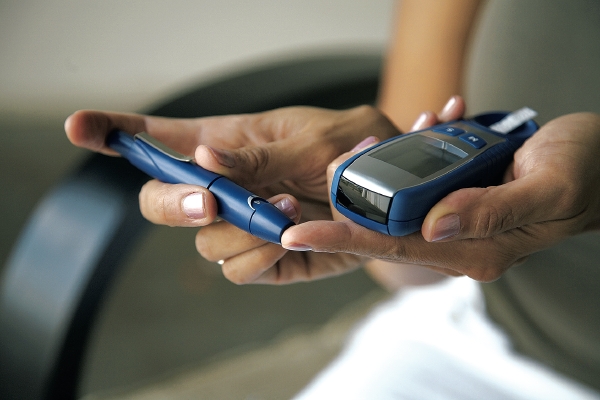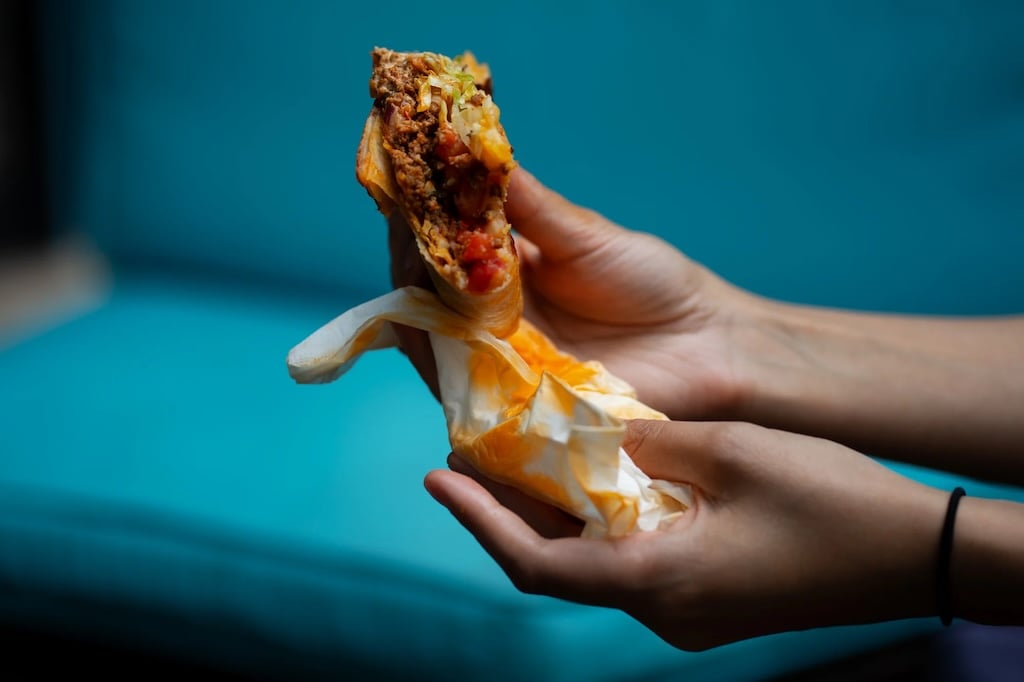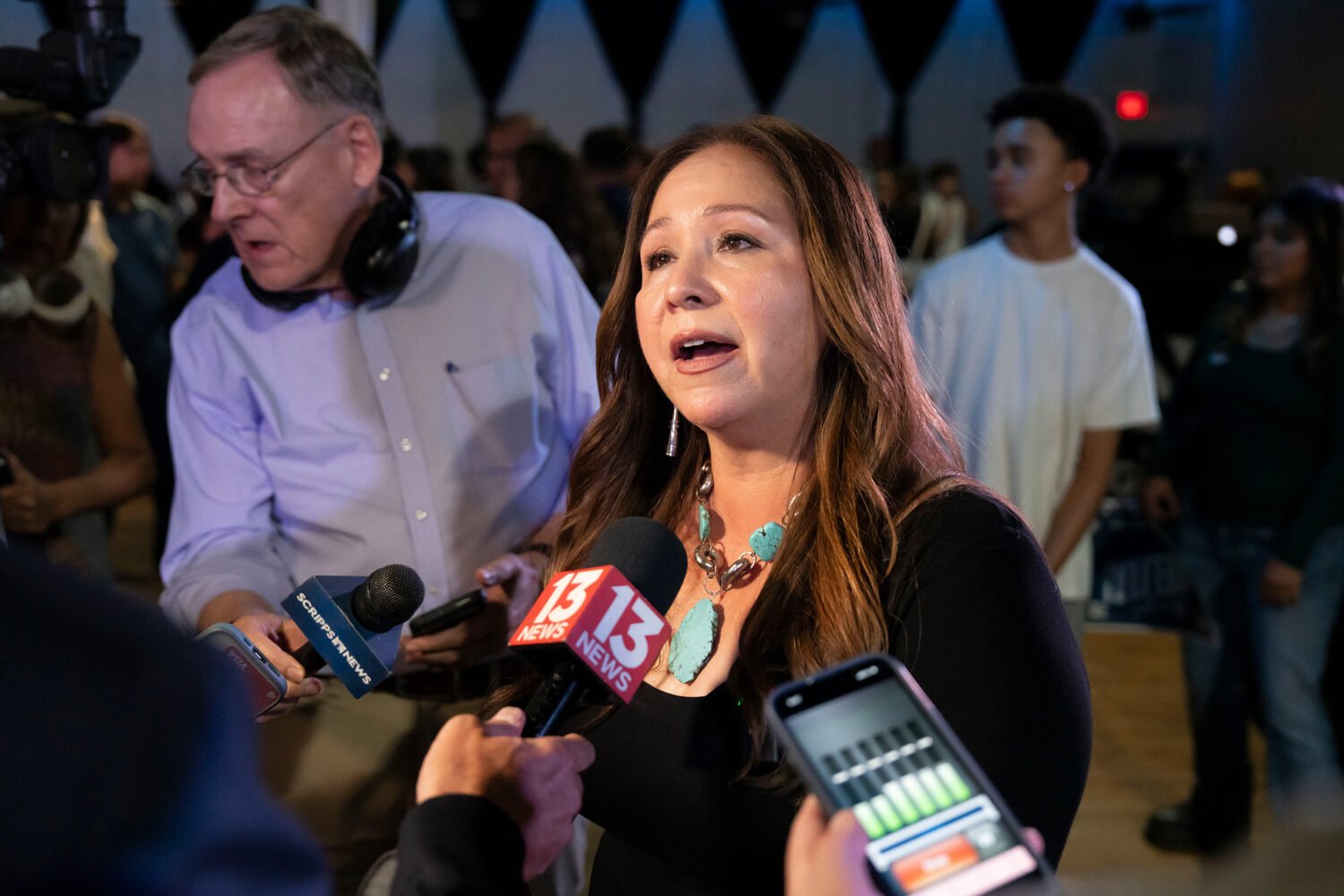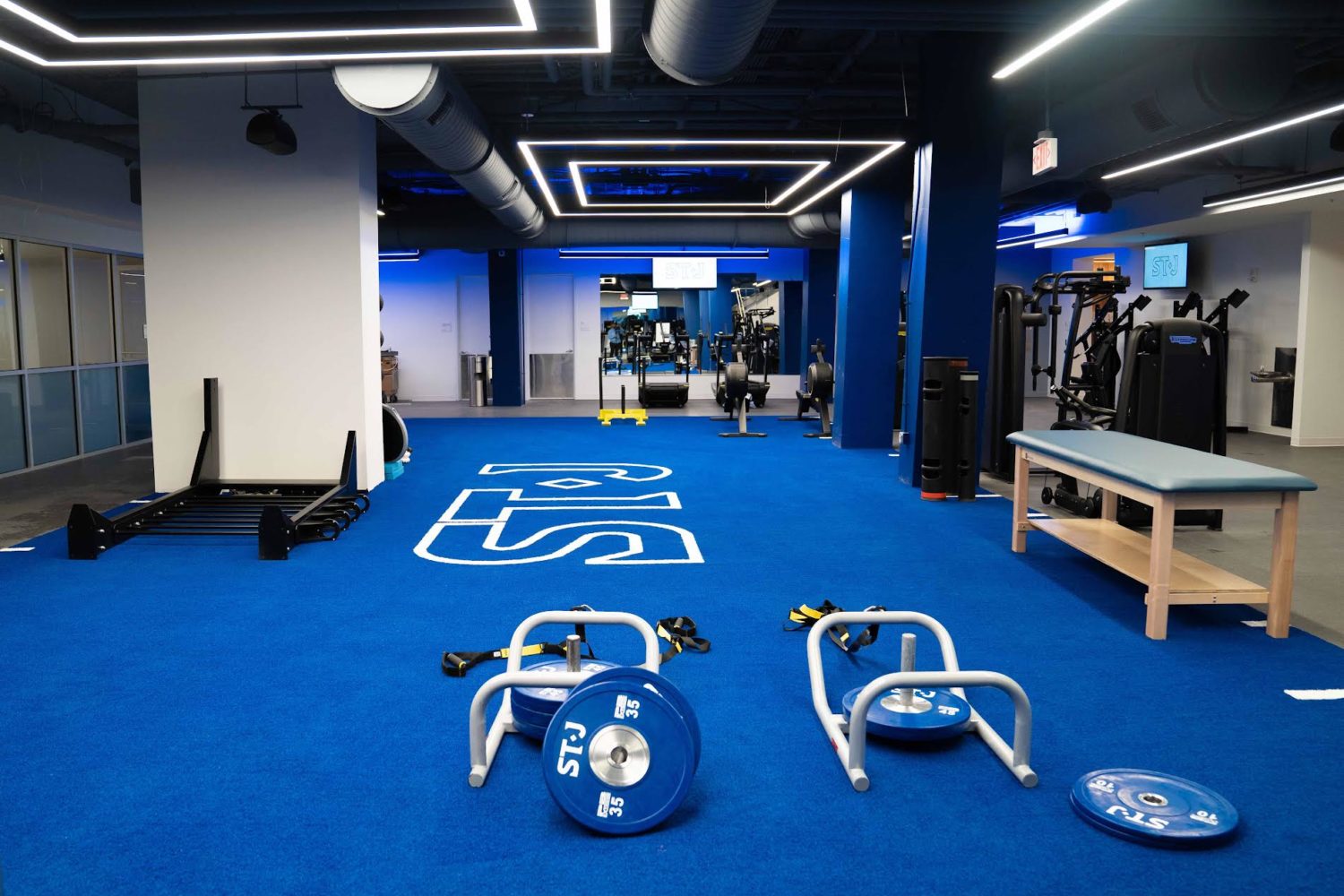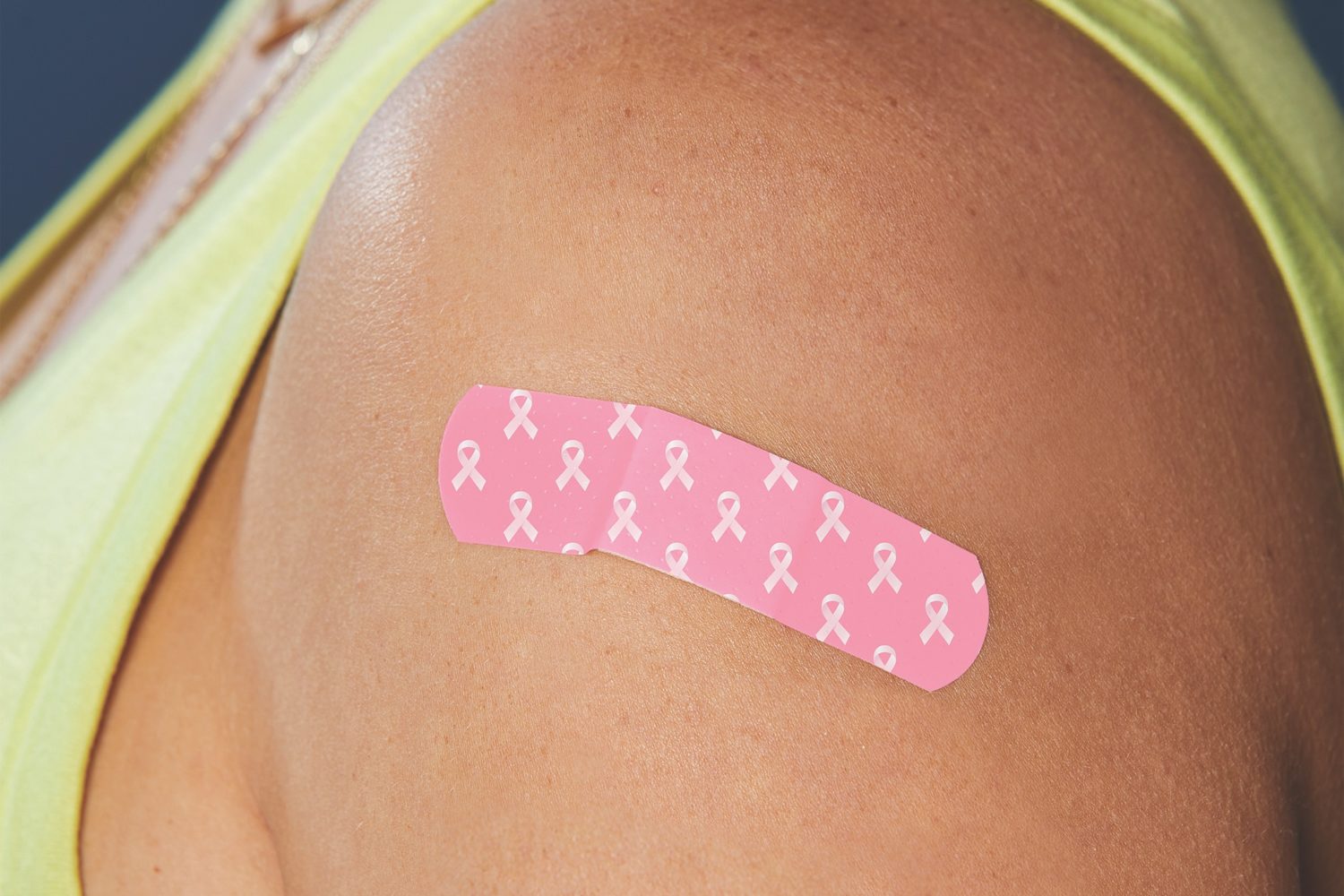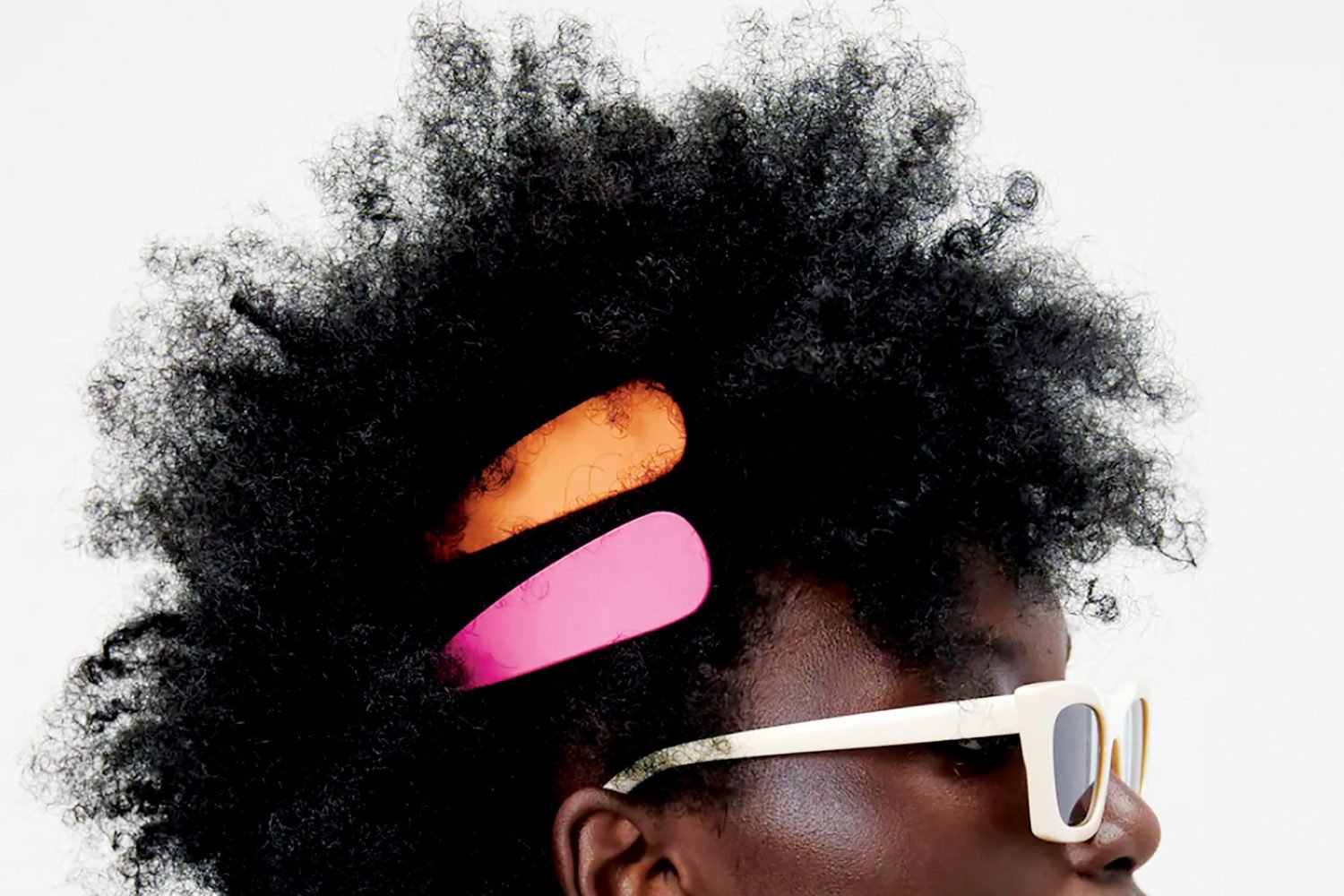When Sonia Sotomayor was nominated for a seat on the US Supreme Court, news stories stressed that she would be the first Hispanic justice. Less noted was the probability that she would be the first justice with diabetes.
Among her endorsements from labor unions, feminists, and Hispanics was one from the American Diabetes Association. Perhaps, said its chief medical officer, Sotomayor’s nomination would shatter the stigma of diabetics as people incapable of living long, productive lives.
This stigma was especially strong in the 1960s when Sotomayor was diagnosed, at age eight, with a form of the disease then known as juvenile diabetes. That’s when she began injecting herself daily with insulin to regulate the level of sugar, or glucose, in her blood. She was disappointed as a little girl when someone told her that a diabetic was too fragile to be a detective like her literary heroine, Nancy Drew.
Sotomayor applied the same self-discipline to her diabetes that she did to her studies, which took her from a Bronx housing project to the Ivy League. She checked her blood-sugar several times a day—not too high, not too low—and gave herself insulin shots.
That was her routine as she moved through Princeton, Yale Law School, a prosecutor’s office, and private law practice and into a seat on the US Court of Appeals in New York City. She never made an issue of her diabetes and didn’t try to hide it—friends have spoken of watching her pull a glucose meter out of her purse at a restaurant, prick her finger, read the test results, and give herself a shot of insulin at the table.
Sotomayor’s quiet struggle with diabetes did have political implications: Supreme Court justices, eligible to serve for life, are scrutinized with an actuarial table. President George W. Bush had appointed two conservatives to the court with the promise of long careers—Chief Justice John Roberts, nominated at age 52, and Samuel Alito Jr., at 55. Democrats hoped for as much from Barack Obama’s first nominee. Sotomayor was 54 when she was nominated, and some people raised the question of whether someone with diabetes had a shorter life expectancy. There was a time when few people with juvenile diabetes survived past 60.
Concern about Sotomayor’s longevity was largely dispelled by a letter from the physician who had treated her for 25 years. He said she kept control of her blood sugar and showed no signs of the damage—to her eyes, kidneys, nerves, blood pressure, or heart—that the disease can inflict. Her test results suggested she’d probably be sitting on the bench next to Roberts and Alito when they all were in their eighties.
A Surprise to Many
Justice Sotomayor has lots of company. Nearly 24 million Americans have diabetes, according to the Centers for Disease Control and Prevention. More than 47,000 adults have the disease in DC, 461,000 in Maryland, and 596,000 in Virginia. There are differences by age—less than 1 percent of the population under 20 has the disease, compared with 23 percent of those 60 and older. About 224,000 Americans die each year of complications from diabetes, and it’s the leading cause of blindness, kidney failure, and non-traumatic amputations.
A quarter of America’s diabetics—nearly 6 million—don’t realize they have the disease. Some diabetics have no symptoms other than high blood sugar, detectable only by a laboratory test. Others mistake the symptoms—increased fatigue and weakness, excessive thirst, extreme hunger, dry and itchy skin, frequent urination—for signs of aging.
A diabetes diagnosis can come as a complete surprise, uncovered during some other medical event. Actress Mary Tyler Moore’s was discovered when she had a miscarriage at age 30, sports commentator Michael Wilbon’s after a heart attack.
Chris Matthews, host of MSNBC’s Hardball, first learned that his blood sugar was too high in 2002 during treatment for malaria contracted on a trip to Africa. He did nothing about it. Four years later, he was hospitalized with complications from diabetes. He was off the air for two weeks—and jolted out of his complacency. By watching what he ate, Matthews lost 30 pounds. Despite an aversion to needles, he began testing his blood sugar regularly and taking insulin injections every day.
Diabetes is growing more prevalent in the United States—the number of cases is up by 30 percent over the past decade, with nearly 4,400 new cases diagnosed each day. Contributing to that rise, besides improved detection, are a growing population of elderly and a higher incidence of obesity born of unhealthy eating habits and lack of exercise. Obesity—one of the main risk factors for diabetes—seems to explain why North America has a higher rate of diabetes than other parts of the world. The number of diabetics worldwide is estimated at 249 million.
Diabetes is more common among most minority groups. While 9.8 percent of non-Hispanic whites over age 20 have diabetes, the numbers are 14.8 percent among African-Americans, 14.2 among Native Americans, 10.4 among Hispanics—but only 7.5 percent among Asian-Americans.
DC and Prince George’s County, with high percentages of African-American residents, have the highest diabetes rates in metropolitan Washington. The worst rate in the world is among Arizona’s Pima Indians—50 percent of those over age 35 have diabetes and also suffer from obesity.
Diabetes is one of the country’s costlier diseases, with an annual bill of $174 billion. Two-thirds of that is direct medical costs—diabetes accounts for about one in every three dollars spent on Medicare—and the other third is in lost work days and diminished productivity. It’s also costly to individuals and their families, though the burden varies depending on health-insurance coverage. Sugar Ray Leonard, the boxing champion from Palmer Park, told a congressional committee that the financial burden of his father’s diabetes was one reason he abandoned plans to enroll at the University of Maryland and turned pro instead.
Diabetes has spawned many organizations to support those who have it. The American Diabetes Association, founded in 1940, is headquartered in Alexandria. It lobbies Capitol Hill for funding, raises money for private research with a Tour de Cure bike ride and other activities, and provides information to diabetics about diet, fitness, and medications through publications, a Web site, and a network of more than 100 offices nationwide. Similar efforts are made by the New York–based Juvenile Diabetes Research Foundation International, created in 1970 and often identified with its longtime spokesperson, Mary Tyler Moore, who has been joined by a new generation in 17-year-old singer Nick Jonas, who was diagnosed in 2007.
The ADA is active in fighting discrimination that diabetics have faced. The Americans with Disabilities Act was broadened to include them; the ADA pushes legislation and files lawsuits to give diabetics access to all but a few professions and to ensure that their needs are accommodated. A ban on diabetics as truck drivers was lifted in 2003, and a recent court ruling allowed a diabetic to join the FBI.
A focal point of research is in Bethesda at the National Institutes of Health, which will spend about $1 billion this year on diabetes studies, about half of them managed by the National Institute of Diabetes and Digestive and Kidney Disease. Among the goals: to understan
d the disease’s microbiologic complexity and use that knowledge to develop new techniques for controlling it, perhaps using stem cells.
Diabetics have lots of support on Capitol Hill. The bipartisan Diabetes Caucus is the largest in the House, with more than 250 members, several of whom have the disease or have family members who do. One cochair, Colorado congresswoman Diana DeGette, got involved a decade ago when her four-year-old daughter was diagnosed.
Screenwriters have used diabetes as a dramatic device. Crises loom when an ex-convict with diabetes loses his insulin during a plane crash in Con Air and when a teenager is locked away without hers in Panic Room. Even the murderous Michael Corleone in the Godfather series was a diabetic, as was the original book’s author, Mario Puzo.
Why Does It Happen?
Diabetes has been known since ancient times—the word, from the Greek, means “siphon,” an allusion to the fact that body fluids seemed to flow from diabetics through frequent urination. The disease’s full name is diabetes mellitus, the latter word being Latin for “honey-sweet,” added in 1674 by the physician to King Charles II, who noticed that a diabetic’s urine often was sweet. Lots of remedies were suggested—from opium and bleeding to diets of dates and gruel—but nearly all diabetics died an early death.
Medicine has understood since the 1890s that diabetics’ bodies don’t handle insulin properly. This essential hormone—secreted by the pancreas and released after a meal when glucose increases in the blood—normally stimulates muscle and fat cells to remove the glucose and the liver to metabolize it, causing blood sugar to decrease to a normal level. In diabetics, the pancreas either produces little or no insulin or the insulin produced isn’t properly utilized.
Type I diabetes—the type that Sonia Sotomayor has—usually is diagnosed in children and adolescents and was once known as juvenile diabetes, a term now deemed inappropriate because many Type I diabetics live into adulthood. It’s an autoimmune disease in which the body attacks and destroys cells in the pancreas, leaving a person with no natural insulin supply. To survive, Type I diabetics must get daily insulin injections for the rest of their lives. Of the two main types of diabetes, Type I is much less common, affecting one in every 600 American children—about 180,000 in all.
The more common Type II diabetes affects nearly 24 million Americans—it’s the kind that’s increasing so rapidly. It usually is diagnosed in adults and was once known as adult-onset diabetes; that term is now inappropriate in part because of the disease’s increasing incidence among the young. In Type II diabetics, the pancreas produces insulin, but the body doesn’t utilize it in a way that keeps blood-sugar levels normal. Some women develop a variation called gestational diabetes during pregnancy.
Another twist is pre-diabetes, which has come to be recognized as a warning sign. Pre-diabetics are people whose blood sugar is elevated enough to signal that they may be on the road to Type II diabetes unless they take steps to get their levels back to normal. There are a couple of blood tests for pre-diabetes, and experts believe that the number who suffer from it is very large, perhaps as many as 57 million Americans.
Scientists haven’t yet pinned down how much diabetes is determined by hereditary factors and how much by behavior. Both types have a genetic component, but Type II seems to be triggered by an unhealthy lifestyle, especially obesity and lack of exercise. Children of two parents with Type I diabetes are more likely to have it.
From Head to Toe
Diabetes not properly controlled can trigger an avalanche of complications. Experts agree that its actual death rate is underestimated because doctors who fill out death certificates and writers who draft obituaries report the complications rather than the underlying disease. The breakdowns a diabetic can suffer run from head to toe.
Starting with the head, chronic exposure of fragile blood vessels in the eye to high blood sugar causes damage that can lead to blindness. The condition, known as diabetic retinopathy, causes up to 24,000 new cases of blindness each year, making diabetes the leading cause of blindness in adults. Jackie Robinson, a Type I diabetic who broke baseball’s color line in 1947, was blind when he died at age 53.
Periodontal disease, which affects the gums, affects about a third of diabetics.
Diabetes is associated with deadlier complications surrounding the body’s cardiovascular system, where it can be connected with high cholesterol, high blood pressure, and damage to blood vessels leading to strokes and heart attacks, which account for 65 percent of deaths among diabetics.
Diabetes is the leading cause of kidney failure, accounting for nearly half of new cases each year. Many of the 180,000 Americans on kidney dialysis are diabetics; some of those facing renal failure—such as former DC mayor Marion Barry—end up with a kidney transplant.
Farther south, erectile dysfunction—a complicated problem that can result from nerve damage and inadequate blood flow—is experienced by 35 to 50 percent of men with diabetes. And diabetics over age 60 are two to three times more likely to be unable to climb stairs.
Diabetes causes nerve damage that can lead to amputation of lower limbs and appendages—about 71,000 amputations a year in the United States. This damage can express itself as a tingling or loss of feeling in toes, feet, or legs—the medical term is peripheral neuropathy—and it can be so severe that diabetics can’t feel the ground when they walk. The worst scenario begins when a blister, ulceration, or cut goes unfelt and untreated, high blood sugar interferes with healing, infection sets in, gangrene develops, and amputation is required. This is why diabetics are advised to check their feet daily for blisters, cuts, or sores.
Along with blindness, amputation is the most poignant consequence of diabetes. Jackie Robinson lost a leg to the disease, as did jazz singer Ella Fitzgerald, and amputations were the fate of several prominent diabetic Washingtonians, including singer Shirley Horn and columnist Carl Rowan.
Political columnist David Broder told his own story of the dangers of diabetes a few weeks ago at a medical conference organized by Georgetown University Hospital, home to one of the country’s leading programs trying to spare diabetics from amputations. While covering the Iowa presidential caucuses in 2000, Broder says, he did “something really stupid.” He got a sore between the toes of his left foot, neglected it, and let it become infected.
“I didn’t want to shut down and leave the campaign trail, so decided to tough it out,” he told conferees. After a week or so, the pain was severe enough that he went to a clinic in Des Moines and was sent to a hospital and put on antibiotics.
When the caucuses were over, Broder went to see Christopher Attinger, his doctor at Georgetown: “He gave me hell, as he should have, then began to make the best of a bad situation.” To save Broder’s feet, Dr. Attinger removed all of the toes on the left foot and the big toe on the right. Broder has had no problems with his feet since then, though he uses orthotic shoes.
All of this reminds me of my father, who spent his life in Missouri raising cattle and was diagnosed with diabetes in his mid-fifties. He wasn’t aggressive in controlling it—he took a few pills but kept eating coconut-cream pie and putting on weight. By his mid-seventies, he was in a nursing home; a few years later, he’d lost his right leg, all the sight in his left eye, and most of it in the right.
When I flew home to visit, I had to get the nurses to help me hoist him into his old Chevy pickup, and he no longer could jump out and open the gates when we went out to see his cattle. I don’t think he could see his cows very well, though he pretended to. Mostly he stayed in the pickup dropping cigarette ashes on his overalls.
One of his last remaining joys was the Baby Ruth candy bar an old buddy sneaked into the nursing home every week. He’d try to eat it quickly
before he was caught, his friend keeping a lookout. Finally, one warm spring night when he was 84, he lapsed into a coma and died.
I was lucky to be there, but I always figured that Dad’s diabetes might be a bad omen for me. So it wasn’t a big surprise when in my mid-fifties my doctor said diabetes had caught up with me.
Always on Your Mind
Living with diabetes requires not only vigilance but arithmetic. You have to watch your numbers. There’s the blood-sugar level to be measured one or more times a day and your A1C number, a measure of hemoglobin that summarizes the average blood-sugar level, every few months. You have to stay informed about your blood pressure and cholesterol count. You must know the number of pills or the amount of insulin you need, and perhaps count carbs on your plate.
The most onerous part of the routine involves needles—hundreds a year in the most demanding cases. Checking blood sugar with a glucose meter involves pricking a finger, or some other part of the body, to extract a tiny bit of blood that’s applied to a testing strip and inserted into the meter to produce a digital reading. Insulin is taken with single-use syringes or needle-tipped “insulin pins”—or by way of a high-tech pump that delivers it through a thin plastic tube attached to a port under the skin. On the bright side: Nearly three-fourths of diabetics are able to control the disease without insulin.
Diabetes also takes a psychological toll. Every blurry image is a source of worry about approaching blindness; every tingle sparks fear that a limb might one day need to be amputated. Diabetics may suffer guilt about lacking the discipline to eat correctly or exercise enough. Those prone to hypoglycemia—when blood sugar is too low and dizziness and disorientation ensue—fear an episode while they’re driving or at some other inopportune moment. CNN’s Larry King, a diabetic, tells of once almost passing out on the air while interviewing Betty Ford.
While there have long been support groups in which diabetics get together to share their struggles, message boards on the Web have opened up new venues for trading information. The American Diabetes Association has a dozen of these that get tens of thousands of postings each month. People ask questions about topics ranging from whether to eat Chinese food to summer camps for diabetic kids. And they share a special kind of humor: “You know you are a diabetic when your new ice cream scoop is a teaspoon.”
Nowhere are the frustrations of living with diabetes on better display than on message boards for teenagers, many of whom were diagnosed as young children and now are coping with both diabetes and the confusion of adolescence:
• “I hardly test [my blood sugar]. Poor example, I know. I hate seeing the numbers.”
• “People don’t realize it’s not temporary. It’s for life.”
• “The question is always what did we do to deserve this?”
• “This sounds so mean but sometimes I wish all my friends had diabetes just for a week so they could see how it feels.”
• “I hope for a cure but I can hardly take it. The doctors need to start working harder on it and fast.”
• “I feel so guilty to complain, but I’m sick of this. I hate it. I want my old life back.”
Dating is a concern, especially among girls: “This guy I’ve liked for a long time asked me out a week ago. He doesn’t know I have diabetes. I feel like I should tell him in case I’m having any problems. But I’m scared he’s gonna look at me differently or break up with me.” A consensus soon develops that any worthwhile guy will understand—one girl says her non-diabetic boyfriend carries his own meter and tests with her so she won’t feel alone.
There’s lots of self-consciousness about taking insulin shots in public. James Hirsch, a New York Times reporter who wrote a book about his experiences as a diabetic, tells of once ducking into a peep-show booth in Times Square to take his shot. The teenagers find it amusing that so many people who see them injecting their insulin mistake them for drug addicts.
Sometimes it’s fun to be a little devious: “I memorized a little speech I would deliver to every teacher at the start of the school year about how there might be times when my blood-sugar level got too low and I had to go to the principal’s office to eat a candy bar. And yes, there were a few times when my blood-sugar level wasn’t really low, but I was so bored in class that I said it was anyway.”
They even trade tips on clothing, including everybody’s favorite T-shirt for the diabetic with attitude. It has a graphic of a big hand flipping a middle finger to the world, with a needle at the end of the finger. Above that: I’M SICK OF PRICKS. FIGHT DIABETES.
Good News
The good news about diabetes—as Sonia Sotomayor and thousands of others attest—is that it can be controlled and a long life is possible. It’s important to be aware of its symptoms—extreme thirst or hunger, frequent urination, blurry vision, tingling in hands and feet, cuts that don’t heal, or unusual weight loss. And it’s a good idea to get a blood test, especially if you have a family history of diabetes, are overweight, have high blood pressure or high cholesterol, or are over age 45.
Because diabetes can damage so many parts of the body, treatment requires a team of medical professionals. Besides seeing a primary-care physician, there may be periodic visits to an endocrinologist, urologist, cardiologist, ophthalmologist, and podiatrist. Important information also may be gleaned from a pharmacist, nutritionist, exercise expert, or certified “diabetes educator” in a program run by a hospital or other organization.
While regular consultations with specialists are important, diabetes demands disciplined self-management. The main goal is to keep the blood-sugar level as close to normal as possible. The recognized standard is 90 to 130 on the glucose meter before a meal, and it’s possible to be either too high, which is more common, or too low. Once it gets down to 70, there’s a danger of hypoglycemia, which can lead to dizziness or coma. A hypoglycemic episode requires glucose pills, fruit juice, hard candy, or some other food to boost blood sugar back to normal.
Daily testing of blood-sugar levels, despite all the needle pricks, is easier today than a few decades ago. The big advance came with the invention of the glucose meter in 1969—a three-pound device used at first by hospitals to distinguish between unconscious diabetics and unconscious drunks when labs were closed at night. Today’s meters are less than half the size of a cell phone, provide digital readings, and are available in drugstores for about $80.
Another breakthrough, in 1979, was a blood test for A1C, a measure of hemoglobin that summarizes the average blood-sugar level over the previous four months—thus rendering daily testing unnecessary for diabetics whose levels are under reasonably good control. The goal is to keep the A1C level under 7—better yet, under 6.
Other advances in controlling diabetes include oral medications. Some 16 percent of adults with Type II diabetes take oral medications only, and another 13 percent use them in conjunction with insulin shots. The pills work in various ways—stimulating the pancreas to produce more insulin, delaying digestion of carbohydrates to prevent a sudden rise in blood sugar, and increasing the ability of muscles to use insulin. Numerous prescription medications are available, including the popular Metformin, approved by the Food and Drug Administration in 1995 after two decades of use in Europe.
Too Big a Man
Michael Wilbon became a larger-than-life figure, once eating his way up to 252 pounds and a size-50 sport coat. The Washington Post columnist and ESPN sportscaster wasn’t as big as Charles Barkley, with whom he sometimes shared middle-of-the-night feasts of steak and cheesecake. But after eating at McDonald’s 25 straight days while covering the Olympics and filling time between games with a steady diet of ribs, fried chicken, Chinese takeout, pancakes, and doughnuts, it shouldn’t have come as a surprise when his body finally rebelled.
It happened a week before the Super Bowl in 2008. At about 3 am, Wilbon woke up with pain shooting through his left shoulder and down his arm; he was suffering from a heart attack and was rushed to an emergency room. His cholesterol and blood pressure were both too high; a cardiologist performed an angioplasty to unclog an artery. Tests also showed that his blood sugar was about 400 and that he was suffering, like his mother, from diabetes.
This link between heart disease and diabetes is common. Wilbon began watching his diet, got a personal trainer to help him exercise regularly, and lost enough weight to fit into a size 46. For the diabetes, he also began injecting insulin.
He admitted in a column that he couldn’t help rooting a little for Jay Cutler, the former Denver Broncos quarterback the Redskins toyed with signing last spring. Cutler, too, suffers from diabetes, which was discovered after he lost 33 pounds and some of the zip on his passes during the 2007 season. He has to check his blood sugar during games, and off the field he wears an insulin pump.
Redskins coach Joe Gibbs, who gorged on sweets during late-night film sessions at Redskins Park, learned that he had pre-diabetes during his annual physical at the Mayo Clinic after the 1991–92 season, the last of his first stint in Washington. It developed into full-blown diabetes, forcing him to take insulin daily and to keep up his habit of working out on a treadmill. After his return to the Redskins in 2004, he was shocked at what stress could do to his blood-sugar level on game day. He tells of eating breakfast, taking his insulin, and testing a perfect 110 but finding that his blood sugar had soared to 500 by the end of the game.
There was also Dmitri Young, the Nationals’ first baseman with the picture-perfect swing who could never get his weight down and his diabetes under control enough to have much of an impact. Young was like a lot of diabetics who have struggled with their weight, including Jackie Gleason, Aretha Franklin, Elvis Presley, Mama Cass Elliot, Elizabeth Taylor, and Mike Huckabee.
Being overweight is the greatest risk factor for Type II diabetes, and it’s no surprise that the rising incidence of the disease has paralleled the expansion of American waistlines. Some 24 percent of Americans were overweight in the early 1960s; the figure inched up to 25 percent in the late 1970s. By the late 1980s, it had increased to 33 percent, about where it is today.
American men are now 17 pounds heavier on average than they were in the late 1970s, and women are 19 pounds heavier. African-Americans have a 50-percent higher prevalence of obesity than whites, Hispanics a 20-percent higher rate. There are now 32 states where more than 25 percent of adults are obese; six states—among the country’s poorest and most rural—have rates over 30 percent. The rate is 31 percent in West Virginia, 26 percent in Maryland, 25 percent in Virginia, and 22 percent in DC.
The proportion of overweight children age 6 to 11 has doubled over the past 25 years, and the number of overweight adolescents has tripled—which helps explain why Type II diabetes, once rare among young people, now affects more of them.
The solution to the linked problem of obesity and diabetes is as simple to understand as it is hard for some people to implement: more exercise, better diet. Exercise has many benefits—helping control cholesterol, lowering blood pressure, stimulating muscles to use glucose better, and taking off pounds.
The proper diet for a diabetic is the subject of countless books, articles, and Web sites. There’s one basic rule: Diabetics can enjoy all foods and beverages, even sweets and alcohol, as long as they do so in moderation and with a sense of balance among food groups. A shorthand way to watch intake is to count carbohydrates—in bread, pasta, potatoes, and other foods—which are quickly turned into sugar in the blood.
After my father died and I learned that I, too, had diabetes, I was lulled into complacency by decent reports when I visited my endocrinologist every few months. My A1C, the long-term measure of blood sugar, stayed under the recommended level, and the doctor didn’t see a need for me to prick my finger every day and put the blood sample through a meter. I took a couple of pills daily but didn’t need an insulin shot, my eyes showed no signs of damage, and little cuts healed fine.
But while researching this article—talking with experts and other diabetics and reading about the subject—I’ve grown more cautious. One night I woke up from a dream in which a cigar-smoking surgeon, dressed in a bloody Civil War uniform, was standing over me in a field tent amputating my left leg with a surgical saw. I’d already begun watching my diet, but that old sawbones put enough fear in me that I redoubled my efforts, hit the treadmill more often, and have dropped 25 pounds.
I hope that when I’m in my eighties and my kids and I go out to Missouri to the farm, I’ll be able to climb out of the pickup, open the gates, and see the cattle.
This article first appeared in the November 2009 issue of The Washingtonian. For more articles from that issue, click here.

